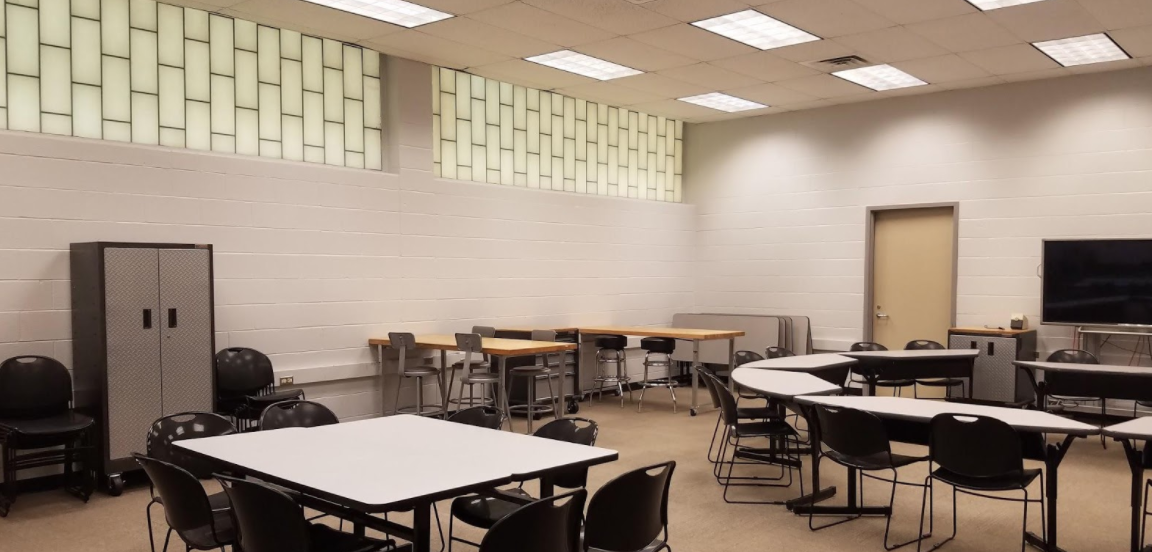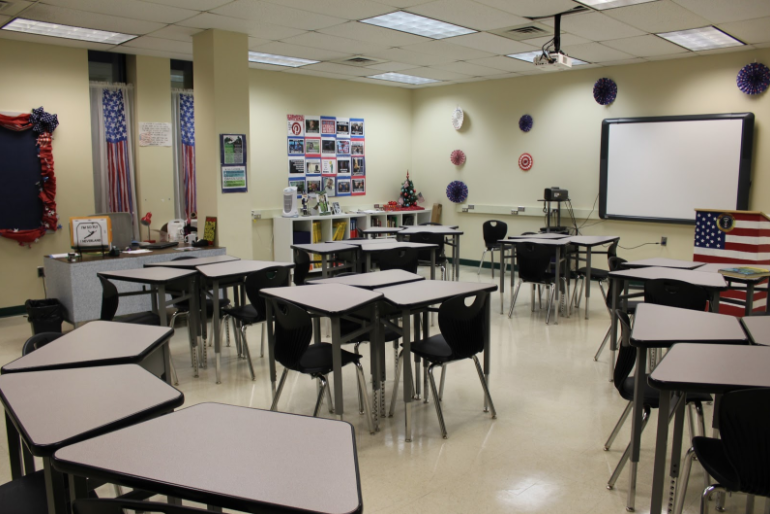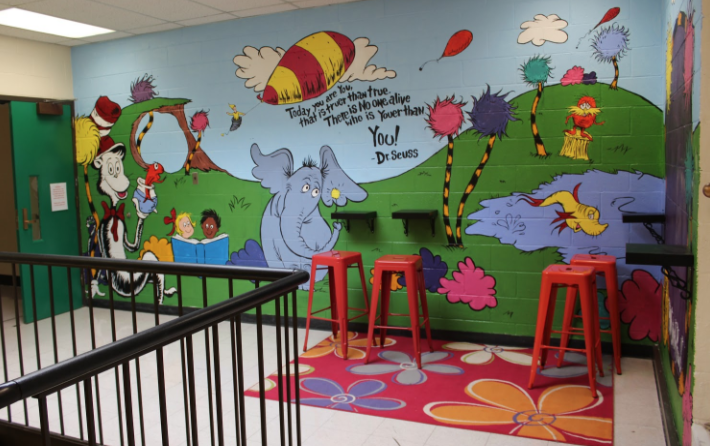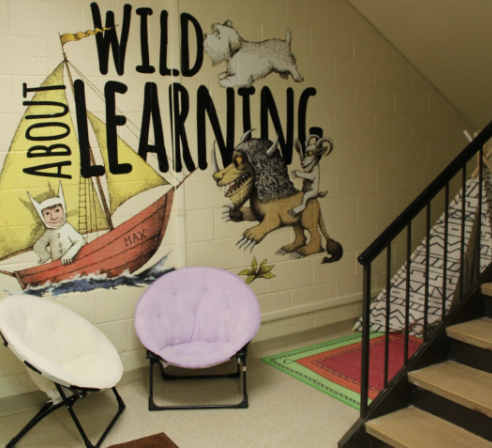|
Cougar Collaboration Center at Carlynton Jr./Sr. High School. Photo by: Wendy Steiner Start with Shared Values One of the many ah-ha moments I had during the FLUENCY Project occurred while participating in an activity lead by Lauren Zito which asked us to deep dive into the choices we made when setting up our classrooms. This activity was so valuable as a source of self-reflection that I was given permission by my principal, Michael Loughren, to lead a professional development session and use Lauren’s process as a guide. I reached out to Lauren to let her know that I would be modeling her activity, and also to ask for some guidance on how I might approach this with my colleagues. Lauren’s suggestion was that we first generate a list of shared values which would help guide our discussion and our focus when we began looking at design choices. The FLUENCY cohort had a list of eight values that served as our compass while we navigated understanding and practicing FLUENCY. These shared values were: Safety, Relationships, Numbers & Narratives, Power, Inquiry Based, Transparency, Choice, and Equity. I would turn to these values to guide me as I focused on the work I was doing with my students, and I knew the benefits of having the teachers generate their own values list. I started the professional development by asking the teachers to work in small groups of 3-5 people and generate a list of three “shared values” for our building. Afterwards, we created a master list of all the values that were listed. Examples included: learning experiences, choice/ownership, safety (with technology & in the physical space), positivity, clear expectations, and extra-curricular options. Any values that were listed multiple times had a number next to them to indicate how many times the value was mentioned. Using the master list, we identified the three most repeated values as: Choice/Ownership, Positivity and Purposeful Technology. Consider the Current Spaces in the Building
I asked teachers to think outside the box and identify any other spaces where students are encouraged to be creative and was pleased to see the inclusion of the weight room, the chem lab, the senior mural and the nature trail. The gym was identified as an area of collaboration in addition to our newly renovated Cougar Collaboration Center. It was interesting to see that no one included their own classroom on their list. Next, the teachers were asked to identify areas in and around the building that have untapped potential for student engagement. They were then asked to list ways that these areas might be transformed into space that elevates student voice and increases student engagement. Overwhelmingly the teachers selected the walls and stairwells as areas of untapped potential. In a time when money and space are at a premium, these are easy areas to convert into a meaningful space for kids. One of our elementary principals, Marsha Burleson, took these underdeveloped spaces in her building and created comfy reading nooks, colorful collaboration spaces and quiet corners for students to gather and work with their peers. Her vision allowed the educational spaces to extend beyond the classroom walls and provided opportunities for students to collaborate and be creative in a non-traditional setting. Self Reflection Faculty members were then asked to spread out and find some space where they could write and reflect individually. Our shared goals were listed on a large Post-It Note and teachers were asked to keep those goals present in their minds as they were writing. First, teachers were asked to imagine the “perfect day in their classroom” and to write a response describing what was happening in the room during that perfect day. They were to give examples of what the students were doing and also to describe what they were doing. Then, they were asked to answer the following questions:
Wrap it Up The session ended with teachers creating a wishlist of items that would help them achieve the classroom goals they set for themselves. This could include everything from choosing a paint color to alternative seating ideas. After teachers created their wish lists, they were introduced to the grant writing boot camp. Teachers were lead through the process of filling out the grant form for our Education Foundation and were also given time to set up a Donors Choose account. A teacher who has had over 12 projects funded on Donors Choose spoke about the process and gave a few tips to teachers about submitting a grant proposal. A representative of the Education Foundation spoke about the types of grants they fund and which information teachers should include on their application. Teachers completed a pre and post survey on the activities. These surveys will help guide future professional development planning. http://www.cmucreatelab.org/ http://www.fluencyproject.org/ http://www.carlynton.k12.pa.us/cms/One.aspx
0 Comments
Leave a Reply. |
Archives
October 2020
Categories |

This work is licensed under a Creative Commons Attribution-NonCommercial-ShareAlike 4.0 International License.





 RSS Feed
RSS Feed